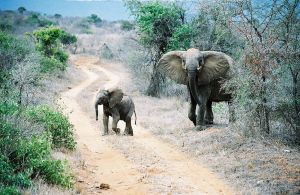A shooting involving a terrorist at Paris’ Orly Airport, while I was going through the security check there, was an anticlimactic end to my 60th birthday celebration in Venice and Paris with my middle son, Michael. Orly is France’s second largest airport. Just before I was scheduled to board my flight home to Alicante, Spain, I noticed the departure gate had changed to the downstairs departure area. As I tried to go to the new departure gate, the airport security officers told me there would be no more flights that day from Orly. Without explanation, they corralled us into the far half of the boarding area, not allowing anyone to leave. The televisions were switched off, and the departure screens frozen, which continued for several hours. We never received any notification from airport staff as to what was occurring, but I googled “Orly news” where I learned that a terrorist had tried to wrestle a gun from an airport police officer, and that he was shot. I did not learn the details until after returning home. Even though I had been told around 845 a.m. that there would be no further flights from Orly that day, around mid-day, without any speaker announcement, the boarding boards were turned back on, although without accurate, updated information on departure times. We finally boarded and departed around 330 p.m. As I write this on March 22, 2017, there has been a terrorist attack in London near the Parliament, and possibly inside.
There is no place in the world in which one is free from the possibility to violence, terrorism or even natural
disasters. In 1998, not long after the terrorist attack on the U.S. Embassy in Nairobi, Kenya, my oldest son and I went to Nairobi and then on safari the Tsavo Park area. Of course, at the time, we didn’t know that the attack was part of an organized terrorist organization. Not long after an American Airlines flight crashed in Queens, a borough in New York, in November 2001, only two months after New York’s September 2001 attacks, we flew to Europe. It was initially speculated the crash could have been a terrorist attack, but it was later determined to be caused by human error. During a tour of eight African countries, while in Bamako, Mali, the nation’s capital, we stayed at a hotel, where several years later, in spite of security, Islamist extremists took 170 people hostage, shooting 20.

Enjoying live classical and Brazilian music at Venice’s Caffè Florian, reported to be the oldest café in the world, dating back to 1720
That said, as a psychologist, particularly a forensic psychologist where we rely heavily on statistics, I make informed decisions based on statistics rather than irrational fears. By far, I have a significantly greater chance of being killed by violence, particularly in the U.S., or by disease, or accidents. I choose to live my life with joie de vivre, focusing on relationships, food, culture, adventure, and curiosity. And if I should meet my end in a travelling accident, for me, that is far better than being holed up in my home or a bunker, or living my life in fear. To that end, I will be providing future blog posts on my Venice and Paris trip, and am providing a sampling of those photos here.









